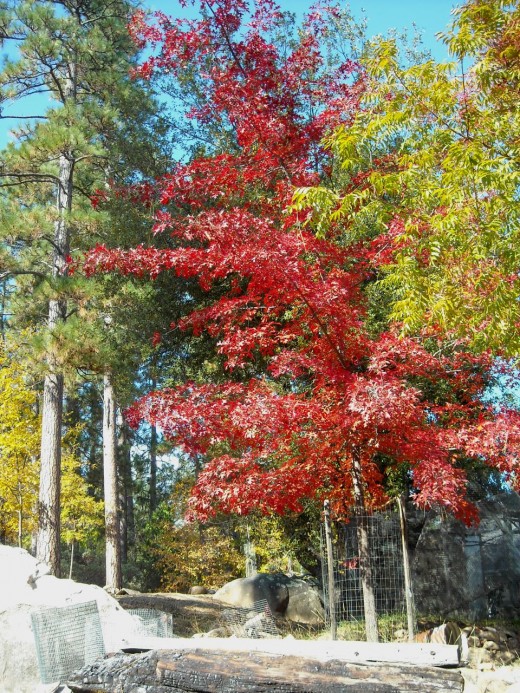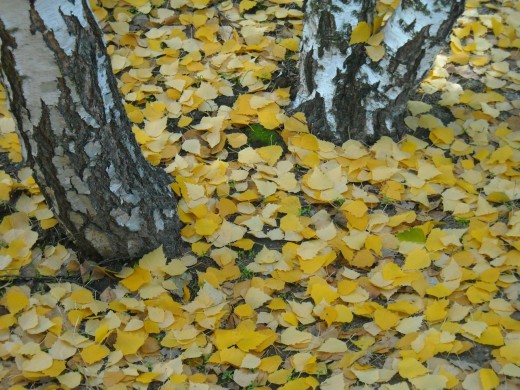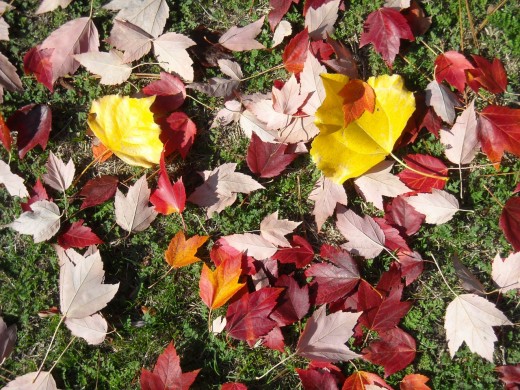Fall Color in California
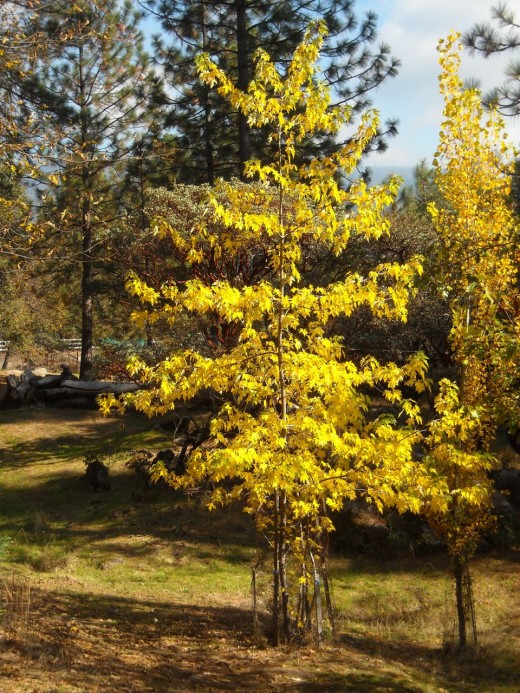
It's All About Location
Growing up in Southern California was great, the weather was almost always pleasant and warm. You could plant and grow lots of things at almost any time of year.
I didn't know what I was missing until experiencing a few years of seasonal changes.
Here in the Sierra foothills we get a little snow each Winter, wildflowers in the Spring, hot sunny days in the Summer and some colorful changes in the Fall.
When you think of Fall color your mind probably imagines scenes of New England, or perhaps Colorado, but certain parts of other states, even California, can produce some pretty spectacular Autumn color as well.
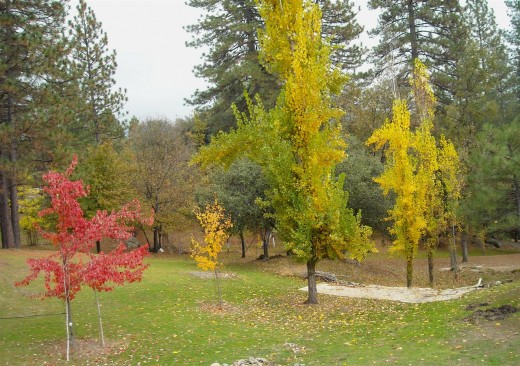
The seasonal color in the Sierra foothills comes naturally. Sometimes for several weeks, and sometimes for a much briefer period.
When it comes to fall color in California, even some native plants can put on a pretty good show in the Golden State.
The black oaks can get very colorful with the right sequence of weather changes. Sometimes we help the Autumnal colors by planting a few trees like Maple and Aspen that are known to be trustworthy show-offs.
Changing angles of sunlight and chilly Fall breezes intensify the brightness of the color and make the leaves shimmer and sparkle.
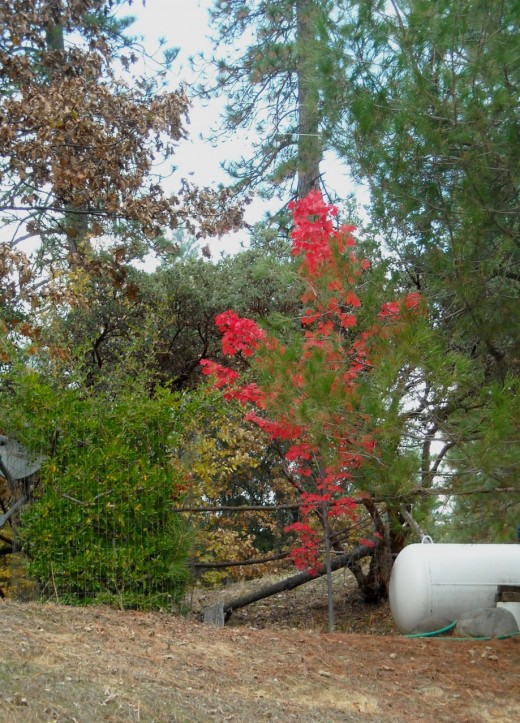
Another red -leafed Maple helps guard the propane tank, and makes a stark contrast to the dark evergreens
I hope the propane gas delivery guy enjoys seeing it. We sure do. It is growing quickly and soon will be putting on an even bigger show of color.
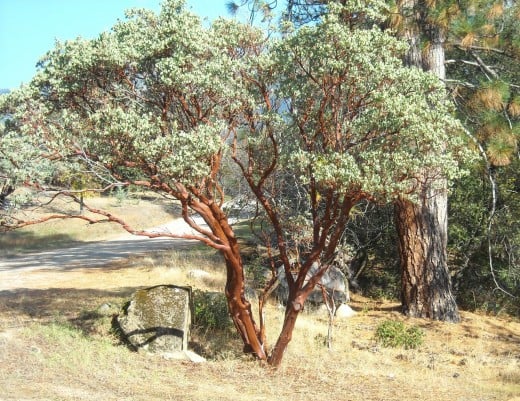
Manzanita bush leaves stay green all year.
They have tiny pink, bell-shaped flowers in the Spring that turn to tiny red berries in the Summer.
In the Fall, they show their smooth rusty-red stems and branches, after sloughing off the thin bark from last year.
This is one of my favorites.
Old manzanita bushes hold on to their grey dead branches for a long time, but if you break off the dead wood, they really show off the their elegant forms.
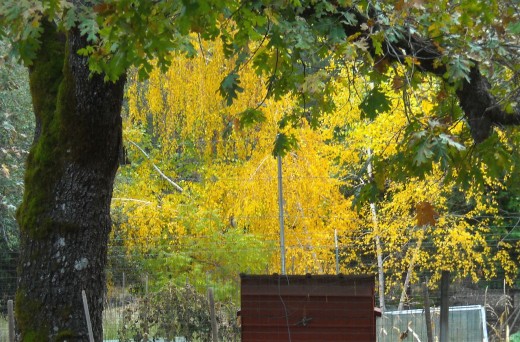
From a back window of our house, there's a view of the chicken house and the garden behind a big Black Oak.
The sun shining on the yellow poplar leaves down by the creek, provide a golden curtain of color in the background.
The poplars are not native, but they seem to do well in this environment.
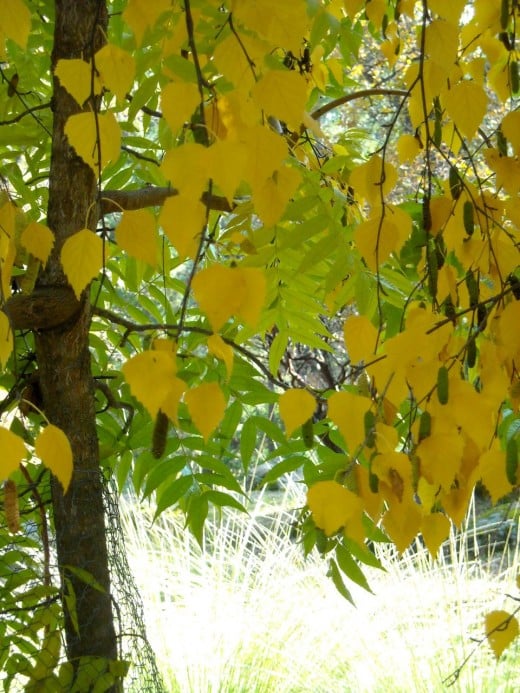
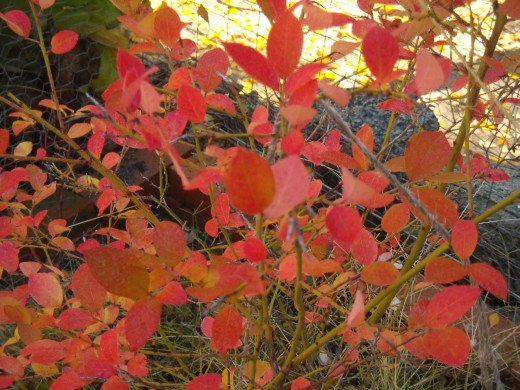
Even the blueberry bushes, when they are finished giving their fruit, might put on a colorful show and to celebrate the changing of seasons. Again, this can depend on a specific set of weather conditions.
This particular year they surprised us was a very artistic display.
You can almost hear them say "Hey! Look at me now!"
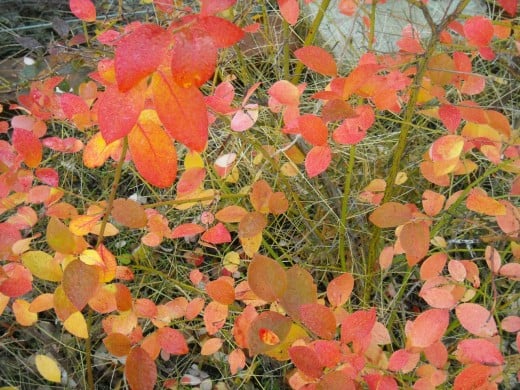
Some of the seasonal color comes in the form of berries.
These will last through the holidays and make a nice Christmas decoration to use in a holiday wreath
I'm always looking for the Cedar Waxwing birds who like to nibble these treats. Occasionally I see one, but those birds are scarce and also very shy.
There seems to be more berries this year. Maybe the Waxwings will be tempted to stay longer.
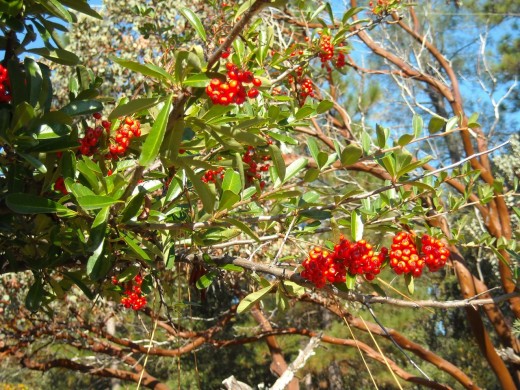
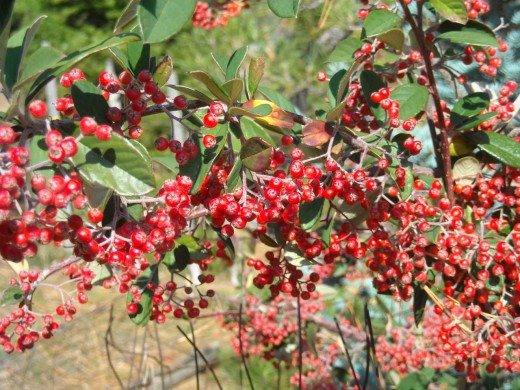
A Japanese Maple in back of the house is protected from the hungry deer by it's wire cage.
Bravely, it shows off it's scarlet leaves.
It is a slow grower and does not like a lot of hot weather. Hopefully it will be able to survive without the protection one day.
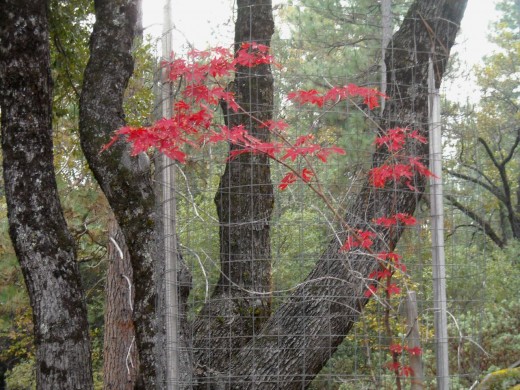
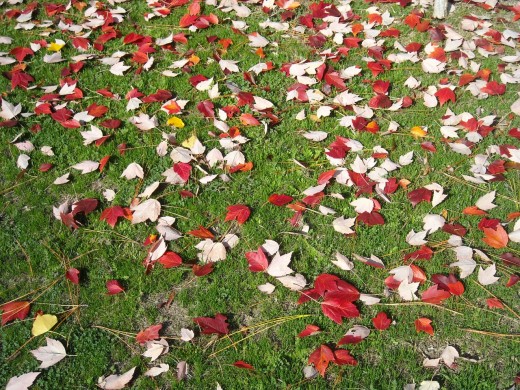
Some people also refer to this season as Autumn or also as Fall.
Of course, "fall" when used as a verb instead of a noun, also means something the colorful leaves eventually do.
They even look pretty on the ground for awhile, but when the trees are finally bare, most of them have turned a dry and crispy brown. They need to be raked up and burned.
